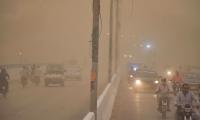What do we exactly do with such ‘iconic’ images? What did we do with that other “iconic” image of the lifeless Syrian boy, Aylan Kurdi, found dead by the Aegean Sea; or before it the Palestinian boy, Muhammad al-Durrah, shot and killed in his father’s arms; or, even before that, the raped, murdered and burned body of Iraqi girl Abeer Qassim Hamza al-Janabi?
These ‘icons’ lack any iconography. You can see the headlines the morning after. It was the Russian jets, no it was the rebels hiding, no, it was the Assad forces. No, it was the rebels. No, Iran. No, Saudi Arabia. No, ISIL. No … ad nauseam.
Who is to be held accountable? All of the above. Now what? Syria is a shooting gallery, presided over by a murderous Bashar al-Assad, sustained in power by Russia and Iran, opposed by even more murderous outfits armed to teeth by the United States and its regional allies. In this cacophony of wanton cruelty, what is an “icon”? What can an “icon” mean, or do, or be?
The same media that brings us this “icon” today has the attention span of a schizophrenic baboon, and by tomorrow this “icon” will be forgotten for another. Can there even be any meaningful “public” to form any public opinion or public pressure occasioned by such “icons?”
“Memory for forgetfulness”, the late Palestinian poet Mahmoud Darwish called moments like this, when we are afraid of losing sight of something that must be remembered.
But remembering it for what, for when, and towards what purpose exactly is that recollection to happen? We live a timeless cycle of normalised forgetfulness, numbed to vicious violence.
President Barack Obama cries openly when there are American children murdered by domestic violence, and yet he has not a tear for a Palestinian child murdered by the guns he gives to Israel with endless repetition and in astronomical figures.
“Haunting video of bewildered Syrian boy goes viral”, Al Jazeera reports. “Images of five-year-old boy, confused after an air strike in Aleppo, spark revulsion across social media.”
Social media? Social media looks like an Hieronymus Bosch painting; murder and mayhem everywhere screaming for attention for a second before this scream is lost in the next, in this echo chamber of hellish ferocity.
This is not an icon. This is Omran Daqneesh. He is a Syrian boy. He is alive. There have been enough remnants and relics of humanity left on this earth to dig that boy out, place him on a safe chair, inside an ambulance, go to rescue the rest of his family, and carry them “to safety”.
But behind him, before he was “saved”, and for a moment staring into the shameless lens of a camera, Omran Daqneesh has left a damning indictment.
In the silent bewilderment and steady gaze of Omran Daqneesh there is the indictment of the entire Earth on which he lives. No fingerpointing to a murderous president here, an obscene king there, or an indecent ayatollah elsewhere, will ever wipe that dusty bloody face or close those piercing, inquisitive eyes.
In front of that face and those eyes every god in every heaven and every creature on every corner of this earth, from the White House to the Kremlin, from Ankara to Riyadh, from Tehran to Cairo, stand accused.
No, this is no icon. This is Omran Daqneesh, a Syrian boy, for one split second shooting through a bare-faced lens to grab your throat - yes, your throat, as it does my throat - and will not allow you to turn away or point a finger at anyone else. That gaze is the look of our damned eternity on this Earth.
This article has been excerpted from: ‘Syria’s Civil War: Yet another ‘iconic image’?’.
Courtesy: Aljazeera.com
Any progressive society or government will uphold security so that people can utilize their full potential
In Pakistan, we have witnessed erosion of public trust in government institutions
Capability, accountability, and responsiveness don’t quite capture the increasingly important issue of legitimacy
The government can directly influence economic activity through current and capital expenditure
A view of the Supreme Court of Pakistan. — Supreme Court website/FileWhat kind of firewall does the judiciary...
Indian soldiers stand alongside a barbed wire on the Line of Control. — AFP/FileAnti-Pakistan propaganda remains a...







